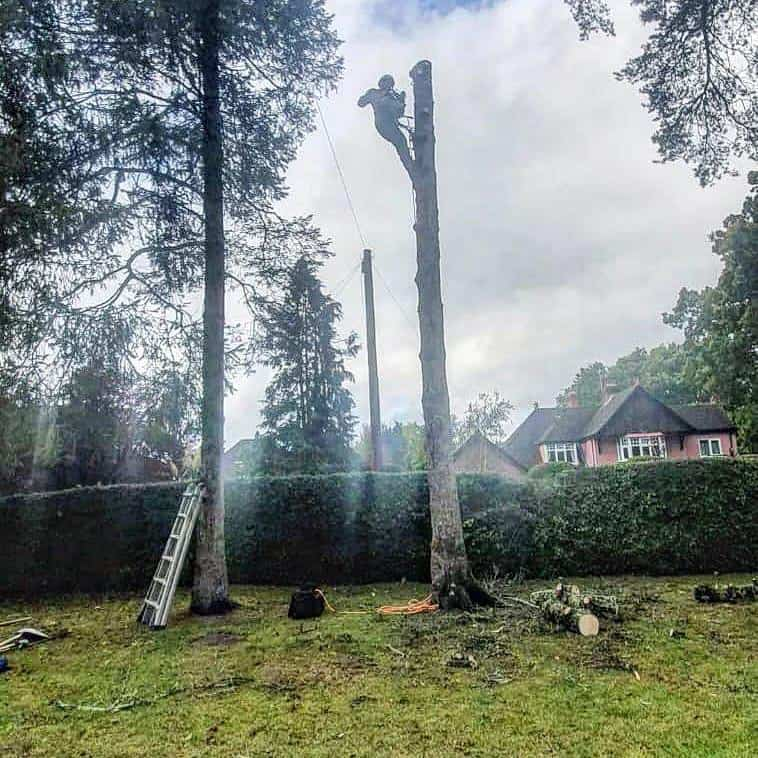Trees play an essential role in public parks and playgrounds. They provide shade, beauty, and a natural environment that enhances the recreational experience for people of all ages. However, as with any natural feature, trees can pose safety risks if not properly maintained. Ensuring tree safety in these spaces is crucial to protect the public from potential accidents and injuries while preserving the health of the trees themselves. In this blog post, we’ll explore key strategies for maintaining safe and healthy trees in public parks and playgrounds.
Regular Tree Inspections and Risk Assessments
The first step in ensuring tree safety is to conduct regular inspections. Trees in public areas are subject to various stresses, including weather conditions, human interaction, and natural growth patterns. Over time, these stresses can lead to weaknesses or defects in the tree structure, such as dead branches or compromised roots.
A qualified tree surgeon should perform regular risk assessments to identify potential hazards, such as:
- Dead or decaying branches: These pose a risk of falling and should be removed promptly.
- Weak or leaning trunks: Trunks that are weakened by disease or environmental stress may fall unexpectedly, especially in high winds.
- Excessive growth: Trees with overgrown branches may intrude into pathways or playground equipment, increasing the risk of accidents.
By conducting thorough inspections on a regular basis, you can address issues early and prevent potentially hazardous situations.
Pruning and Tree Maintenance
Pruning is an important part of tree care. Proper pruning helps to remove dead or damaged branches, reduces the risk of limb breakage, and ensures that trees maintain their shape and structural integrity. When it comes to public parks and playgrounds, regular pruning is especially important to maintain tree safety.
Key benefits of regular pruning include:
- Preventing falling branches: Dead or weakened branches can be a serious hazard. Regular pruning ensures these branches are removed before they fall.
- Encouraging healthy growth: Pruning promotes strong, healthy tree growth, which makes trees less prone to disease and structural failure.
- Maintaining visibility: Trees with overgrown branches can obstruct sightlines, especially in playgrounds. Proper pruning can help keep visibility clear and ensure children are visible at all times.
It’s important to remember that pruning should only be done by a professional. Improper pruning can cause stress to the tree and make it more susceptible to disease or structural weakness.
Managing Root Systems and Tree Stability
The roots of a tree play a critical role in its overall stability. In public spaces, trees may have their roots disturbed by heavy foot traffic, equipment, or even nearby construction. Ensuring that trees are properly rooted and stable is a key factor in maintaining safety.
When assessing tree safety, it’s important to:
- Monitor root health: Look for signs of root damage, such as raised roots or cracks in the soil, which could signal instability.
- Control soil erosion: Soil erosion can cause the roots to become exposed, weakening the tree’s hold on the ground. Ensuring that the soil remains stable around the roots is crucial for tree stability.
- Avoid compacting soil: Heavy foot traffic or vehicles near trees can compact the soil, reducing the oxygen flow to the roots and compromising tree health. Limiting such activities near trees can help maintain root strength.
If you notice any signs of root damage or instability, it’s important to contact a professional tree surgeon to assess the situation and provide advice on how to address it.
Tree Protection Around Play Areas
In parks and playgrounds, children’s safety is of paramount importance. Trees can pose unique hazards in these spaces, such as low-hanging branches or exposed roots that may cause tripping. Ensuring that trees are safely integrated into playgrounds requires some extra care and attention.
Here are a few strategies to improve tree safety in play areas:
- Install protective barriers: Protective barriers can be used around the base of trees to prevent children from coming into contact with roots or climbing trees in potentially unsafe ways.
- Prune low branches: Keeping branches high enough to avoid interference with playground equipment or children’s activities helps reduce the risk of injury.
- Position trees wisely: When planning new playgrounds, careful consideration should be given to tree placement to ensure that they are not too close to play equipment, pathways, or high-traffic areas.
By incorporating trees safely into play areas, you can ensure that they add to the environment without compromising the safety of children or other park visitors.
Conclusion
Maintaining tree safety in public parks and playgrounds is essential for ensuring the wellbeing of both the trees and the people who use these spaces. Regular inspections, careful pruning, and managing the health of tree roots are all vital to preventing accidents and preserving the beauty of these natural features. By taking proactive steps to care for the trees in your public spaces, you can ensure that they continue to provide a safe and enjoyable environment for years to come.
At LM Tree Surgery Southsea, we offer professional tree care services tailored to the needs of public parks and playgrounds. Contact us today to ensure your trees remain safe, healthy, and well-maintained for the benefit of your community.
Call us on: 023 8235 3277
Click here to find out more about LM Tree Surgery Southsea
Click here to complete our contact form and see how we can help with your tree needs.

